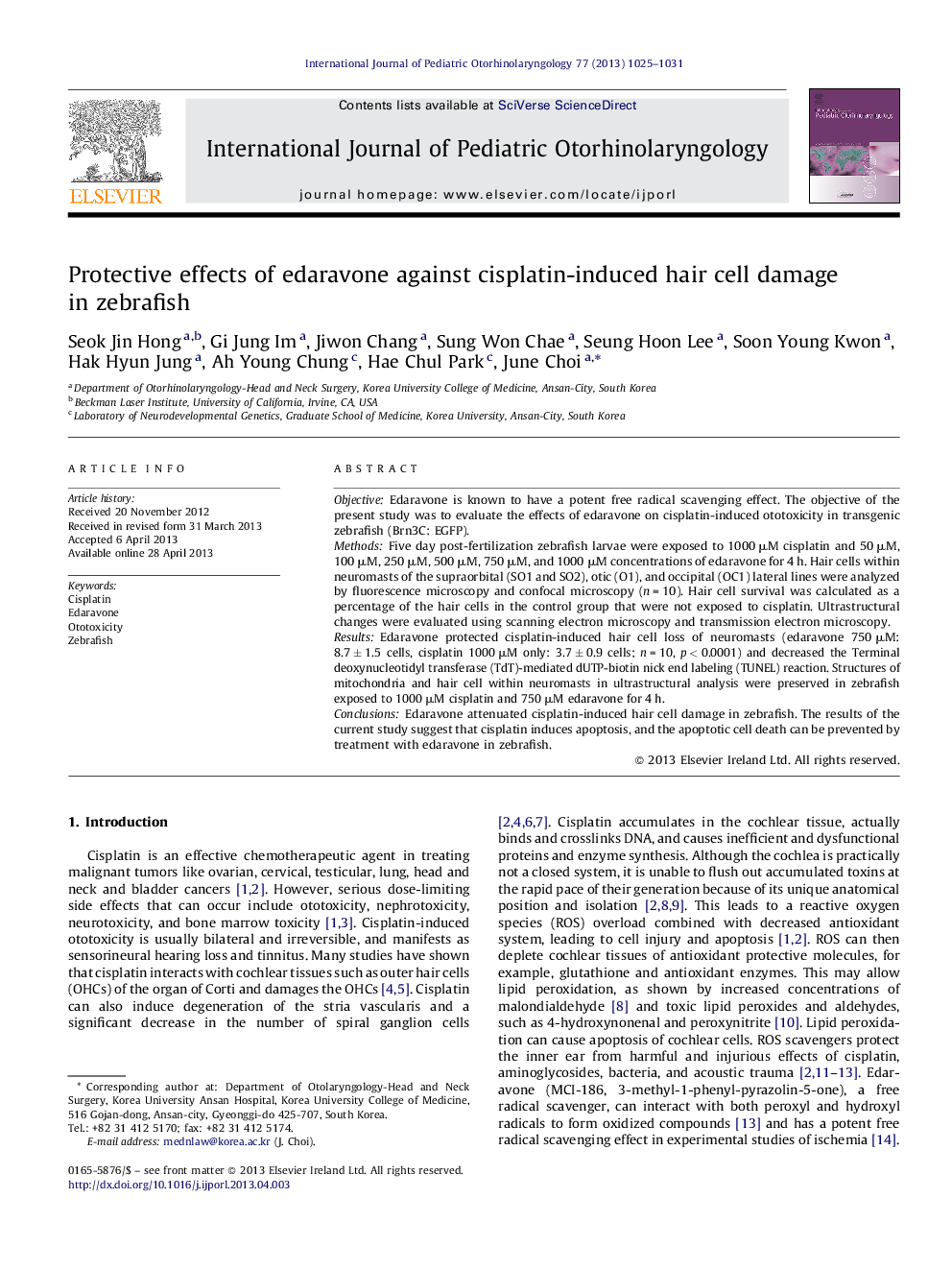| Article ID | Journal | Published Year | Pages | File Type |
|---|---|---|---|---|
| 6213708 | International Journal of Pediatric Otorhinolaryngology | 2013 | 7 Pages |
ObjectiveEdaravone is known to have a potent free radical scavenging effect. The objective of the present study was to evaluate the effects of edaravone on cisplatin-induced ototoxicity in transgenic zebrafish (Brn3C: EGFP).MethodsFive day post-fertilization zebrafish larvae were exposed to 1000 μM cisplatin and 50 μM, 100 μM, 250 μM, 500 μM, 750 μM, and 1000 μM concentrations of edaravone for 4 h. Hair cells within neuromasts of the supraorbital (SO1 and SO2), otic (O1), and occipital (OC1) lateral lines were analyzed by fluorescence microscopy and confocal microscopy (n = 10). Hair cell survival was calculated as a percentage of the hair cells in the control group that were not exposed to cisplatin. Ultrastructural changes were evaluated using scanning electron microscopy and transmission electron microscopy.ResultsEdaravone protected cisplatin-induced hair cell loss of neuromasts (edaravone 750 μM: 8.7 ± 1.5 cells, cisplatin 1000 μM only: 3.7 ± 0.9 cells; n = 10, p < 0.0001) and decreased the Terminal deoxynucleotidyl transferase (TdT)-mediated dUTP-biotin nick end labeling (TUNEL) reaction. Structures of mitochondria and hair cell within neuromasts in ultrastructural analysis were preserved in zebrafish exposed to 1000 μM cisplatin and 750 μM edaravone for 4 h.ConclusionsEdaravone attenuated cisplatin-induced hair cell damage in zebrafish. The results of the current study suggest that cisplatin induces apoptosis, and the apoptotic cell death can be prevented by treatment with edaravone in zebrafish.
